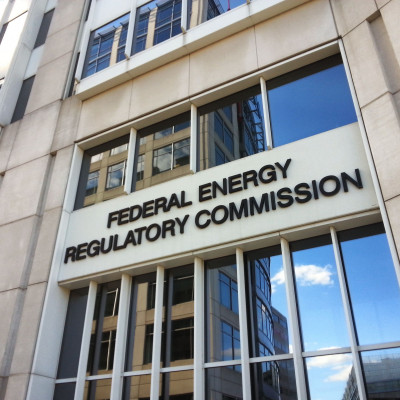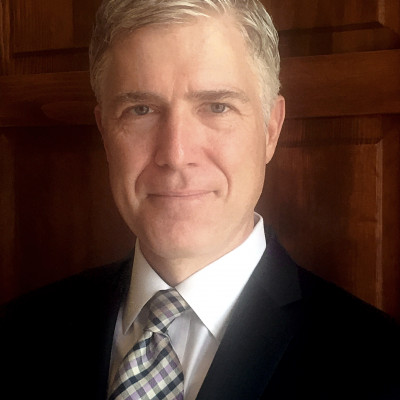January 31, 2017
January 2017 at Policy Integrity:
- New Brief for Challenge to Mercury Rule;
- Trump’s Deeply Flawed “2-for-1” Regulatory Order;
- Energy Storage Comments to FERC;
- In the News: Gorsuch Nomination, Changes Under Trump; Fixing the Federal Coal Program
-

New Brief for Challenge to Mercury Rule
In 2012, EPA issued the Mercury and Air Toxics Standards (MATS), which limit coal- and oil-fired power plants’ emissions of mercury and other hazardous air pollutants. The rule has faced a series of legal challenges ever since, largely focusing on its costs and benefits, despite the fact that EPA projects annual monetized benefits to outweigh costs by as much as nine to one. In the newest challenge, Petitioners ask the U.S. Court of Appeals for the D.C. Circuit to ignore or discount large portions of EPA’s analysis—namely, its consideration of indirect benefits (sometimes called ancillary benefits or co-benefits) and unquantified benefits. But, as our amicus brief for the case points out, EPA’s consideration of indirect benefits and unquantified direct benefits is consistent with the Clean Air Act, past court decisions, federal cost-benefit guidelines, economic best practices, and regulatory precedent. Overall, we argue that the agency’s cost-benefit analysis was properly conducted and more than satisfies its obligation to consider costs when determining whether regulation of power plants’ hazardous emissions is “appropriate and necessary.”
-

Trump’s Deeply Flawed “2-for-1” Regulatory Order
President Trump’s executive order on reducing regulation calls for cutting two regulations any time a new one is issued, and requires that the aggregate costs of all new rules sums to zero, regardless of their benefits. In response, we released a statement highlighting the irrationality of this approach. Judging a regulation based solely on its costs, without considering benefits, is a deeply illogical. As Richard Revesz points out, “regulations help improve the quality of life for Americans: they ensure food safety, protect clean water, and make airplanes and cars safer.” These benefits are often carefully quantified by the issuing agency, and existing processes already require that a rule’s benefits justify its costs. E&E News and The Minneapolis Star Tribune featured Revesz’s views on the ambiguously worded order, which he says is likely to “cause confusion and chaos” since it does not address legally required rules or deregulatory actions that might count as new rules. Newsweek also used our analysis in exploring how the order threatens important public safeguards.
-

Energy Storage Comments to FERC
In November 2016, the Federal Energy Regulatory Commission (FERC) announced its intent to ease the process for energy storage and distributed energy resources to participate in wholesale electricity markets. The proposed rule would require regional transmission organizations (RTOs) and independent system operators (ISOs) to revise their tariffs to energy providers in order to promote technology neutrality. In comments on the rule, we recommend that in addition to adjusting these tariffs, FERC should take more steps to fully realize the benefits that these technologies could provide for wholesale markets. We recommend that the Commission explicitly clarify the benefits for which it compensates these technologies; allow states to compensate for distribution-side benefits; eliminate location-based constraints on resource participation while recognizing the importance of location in optimally dispatching these services; encourage coordination between RTOs/ISOs and state regulators; and promote advanced metering technology to increase efficiency in how energy is dispatched.
-

In the News: Gorsuch Nomination, Changes Under Trump
With the new administration in the White House, speculation on environmental policy changes is heightening. Denise Grab recently offered insights on the environmental implications of Neil Gorsuch’s nomination for the Supreme Court to Bloomberg News. The New York Times spoke to Richard Revesz on potential efforts to dismantle federal climate rules, and Revesz spoke to the Economist about how states can sue to slow repeal of the Clean Power Plan. After a recent National Academy of Sciences report offered some support for a higher Social Cost of Carbon estimate, Revesz explored the implications for the Trump Administration in the Washington Post.
-

Fixing the Federal Coal Program
American taxpayers do not earn fair market value for coal extracted from public lands, but President Trump could fix this “bad deal” by modernizing leasing terms, as recommended in a recent Department of Interior report. In a new op-ed, Jayni Hein describes how Interior could update royalty rates, minimum bids, and rental rates rather than continuing to use fiscal terms from the 1980s that do not account for inflation or environmental pollution borne by the public. Interior’s recent scoping report for its programmatic review lays out a plan to modernize the coal program. If completed properly, this review would provide information on the net social benefits or costs of federal coal production, and the effect of potential fiscal modifications to the program. Such modifications could add billions to the federal treasury and energy-producing states.
